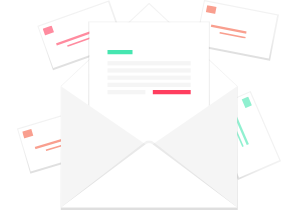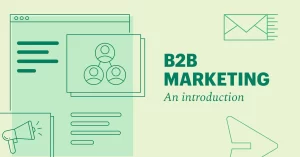
First of all, what exactly is an email marketing strategy? Well at first email marketing is a part of marketing characteristics. An email marketing strategy is a set of procedures that a marketer identifies and follows to achieve desired marketing goals from email advertising. It is an important part of any marketing strategy as email is proved to be the most cost-effective way to promote products, communicate with customers, and reach business goals.
On the other hand, having a list of customer emails and good content to be sent doesn’t mean you are ready to launch an email campaign if you don’t have a clear strategy. It would be like a bunch of meal ingredients without an actual recipe. Generally, Email marketing outperforms all online marketing strategies, including SEO, PPC, and content marketing! And it is the most powerful marketing channel in terms of ROI, as it is returning $38 for every $1 you spend. In this article, you will find the best and most effective tactics to apply for any email marketing campaign to start gaining revenues and going big!
Personalize your messages

Email personalization is an email marketing process that uses customer data to produce more targeted emails. According to recent research, Personalization can generate $20 in ROI for every $1 invested so apparently, you don’t want to underestimate this, right? In the sign-up form, ask for the right information such as name, company, and location to ease your personalization process later.
In addition, Use real replies to your customer emails to improve credibility and appear more personal. Automated responses take away credibility and lead to more email unsubscriptions. Another superior tactic is product personalization, which means directing customers to products that their past purchasing patterns suggest they will like. Product personalization has been proven to trigger positive responses in 98% of customers. So don’t forget, Personalization has to be personal and your email has to sound like it was written for a human, not just an inbox, this is the most important step in your email marketing strategy.
Segment your mailing list

Email segmentation is a mailing list categorizing based on similarities so that marketers can provide the recipients with valuable information and proposals at the appropriate time. Studies found that all email marketing KPIs perform better when you segment your email list.
The segmentation results include increased performance in open rates, revenue, leads, transactions, and click-through rates. You can start by segmenting according to lifecycle stages which depends on the place of the contacts in a sales funnel. Basically, there are three lifecycle stages: subscribers, leads, and customers. You can also segment depending on buyer personas, geographical locations, and consumers’ spends on your brand like VIPs, sales shoppers, and brand shoppers.
Choose the right timing for sending emails

Reports and studies have shown that the emails with the best open rates are being sent either from 8 to midnight or between 10 and 11 AM. As optimal mailing time often depends upon your customers’ behaviors, inbox crowding, and the deployment times of other marketers, experimentation is key to figure out your ideal email timing to get engagement and best results.
Conduct A/B testing regularly to find out how your customer ticks and when he opens an email. And as you work to find which email timing drives the best results for your business, don’t forget to consider time zones if your subscribers are all over the world.
Create triggering subject lines and dynamic content

The subject line is the part of the email that subscribers see when it is delivered to their inbox. It’s what determines whether or not your clients open it. When you collect customer data for targeted emails, the subscriber’s first name is the king here. Subject lines featuring the first name proved to have a 26% higher open rate. Additionally, put into account the length of subject lines when writing the email copy. The majority of email opens are done on a mobile device. While iPhones can only show between 35–38 characters in portrait mode, you should aim for subject lines in the 17–24 character range. And try to keep it to 3–5 words.
As for the dynamic content, it allows you to customize pretty much everything about an email to suit the recipient. Brands are using demographic and geographic data to personalize the offers delivered to each consumer. You can dynamically change entire sections of content within your email to make the entire campaign more relevant and more appealing to subscribers. For instance, messages in the promotional emails should be presented well and marketers should choose formats, fonts, and text sizes depending on the type of emails that they are creating.
Make your emails mobile-friendly

Did you know that during Q1 2019, 61.9% of email opens occurred on mobile, 9.8% on desktop, and 28.3% in a webmail client? When email campaigns are optimized for mobile, they generate much more revenue!
A study has shown that revenue per email on mobile devices is 4X higher than desktop. So following best practices for mobile-optimized emails is essential in every email marketing strategy. And that includes: keeping the subject line and pre-header short, making the call-to-action big and obvious, using single-column templates, limiting emails to a width of 600px, and displaying small images, which is considered one of the most important steps in developing email marketing tactics due to the use of a large category of customers on mobile phones.
Turn to effective A/B testing

A/B testing is a way of working out which of two campaign options is the most effective in terms of encouraging opens or clicks by swapping out different aspects of their email such as subject lines (the most popular option), images, CTAs, headlines, offers, etc. Start by experimenting with your subject lines. Keep everything about the two emails the same except the subject line, and see which one gets more opens.
Make note of which subject line approaches work best for your audience, and then incorporate what you learn into future email campaigns and marketing content.
Analyze behaviors and monitor performance reports

Here we come to the last step of developing an email marketing strategy which is adjusting the strategy based on the reports and feedback that you get. Tracking tools like Google Analytics help you track users’ behaviors when they visit your site or follow links from an email and give you data like open rate, click-through rate, and conversion rate. Marketers can then analyze this data and use it to improve personalization and segmentation.
With the help of these analytics and insights, you will be able to tell what’s working well and what’s not and start converting customers from interested to loyal customers much more quickly.
If you need an online marketing company that creates an email marketing strategies and tactics for you, Smart Touch is the best choice for you. It also provides many services such as search engine optimization services, website design service, content writing, E-commercial website design, and many more services that you can learn about by contacting us.










